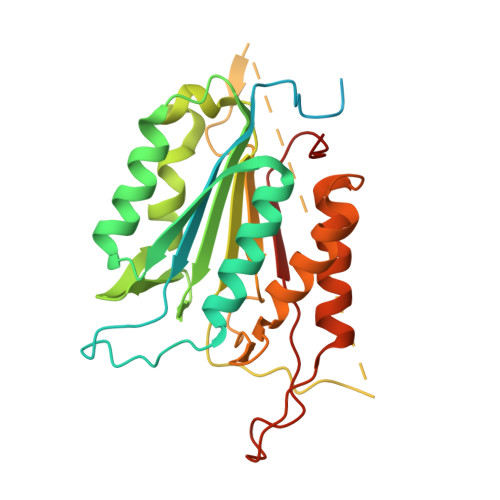A class of allosteric caspase inhibitors identified by high-throughput screening.
Feldman, T., Kabaleeswaran, V., Jang, S.B., Antczak, C., Djaballah, H., Wu, H., Jiang, X.(2012) Mol Cell 47: 585-595
- PubMed: 22795132
- DOI: https://doi.org/10.1016/j.molcel.2012.06.007
- Primary Citation of Related Structures:
4FDL, 4FEA - PubMed Abstract:
Caspase inhibition is a promising approach for treating multiple diseases. Using a reconstituted assay and high-throughput screening, we identified a group of nonpeptide caspase inhibitors. These inhibitors share common chemical scaffolds, suggesting the same mechanism of action. They can inhibit apoptosis in various cell types induced by multiple stimuli; they can also inhibit caspase-1-mediated interleukin generation in macrophages, indicating potential anti-inflammatory application. While these compounds inhibit all the tested caspases, kinetic analysis indicates they do not compete for the catalytic sites of the enzymes. The cocrystal structure of one of these compounds with caspase-7 reveals that it binds to the dimerization interface of the caspase, another common structural element shared by all active caspases. Consistently, biochemical analysis demonstrates that the compound abates caspase-8 dimerization. Based on these kinetic, biochemical, and structural analyses, we suggest that these compounds are allosteric caspase inhibitors that function through binding to the dimerization interface of caspases.
Organizational Affiliation:
Cell Biology Program, Memorial Sloan-Kettering Cancer Center, New York, NY 10065, USA.














